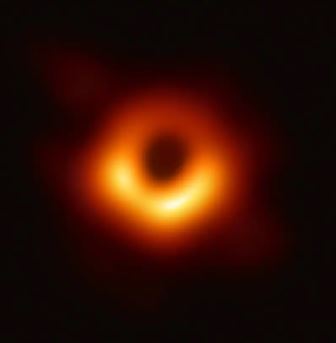How do you photograph something that doesn’t reflect light? It may seem hard to imagine, but that’s exactly what scientists announced they’d done in May of 2022 when they revealed a photograph of a supermassive black hole at the center of our Milky Way galaxy.
A black hole is a region of space so dense that not even light can escape its gravity. They’re formed when massive stars collapse in on themselves. But as they pull in more matter they can get even bigger: this one is over 4 million times as massive as our sun.
The black hole is called Sagittarius A Star (Sagittarius A Star*). Don’t let the name confuse you: the “star” at the end is just an asterisk that scientists say out loud to distinguish the black hole from the greater region where it’s located.
How do you find something that by definition emits no light? Surprisingly it’s easier than you’d expect. As gas, dust, and even other stars are sucked in they move at speeds so fast that they’re superheated, which means the areas around blackholes are some of the brightest spots in the universe.
But photographing them is a whole other problem. To do that, a team of scientists linked together radio observatories on multiple continents and pointed them all in the same direction at once. Weaving together the data they simultaneously recorded allows them to produce the highest resolution images in all of astronomy.
The resulting photograph looks like an orange halo of light surrounding, well, a black hole at its center. It’s only the second time scientists have ever been able to get direct visual evidence of these invisible behemoths.











